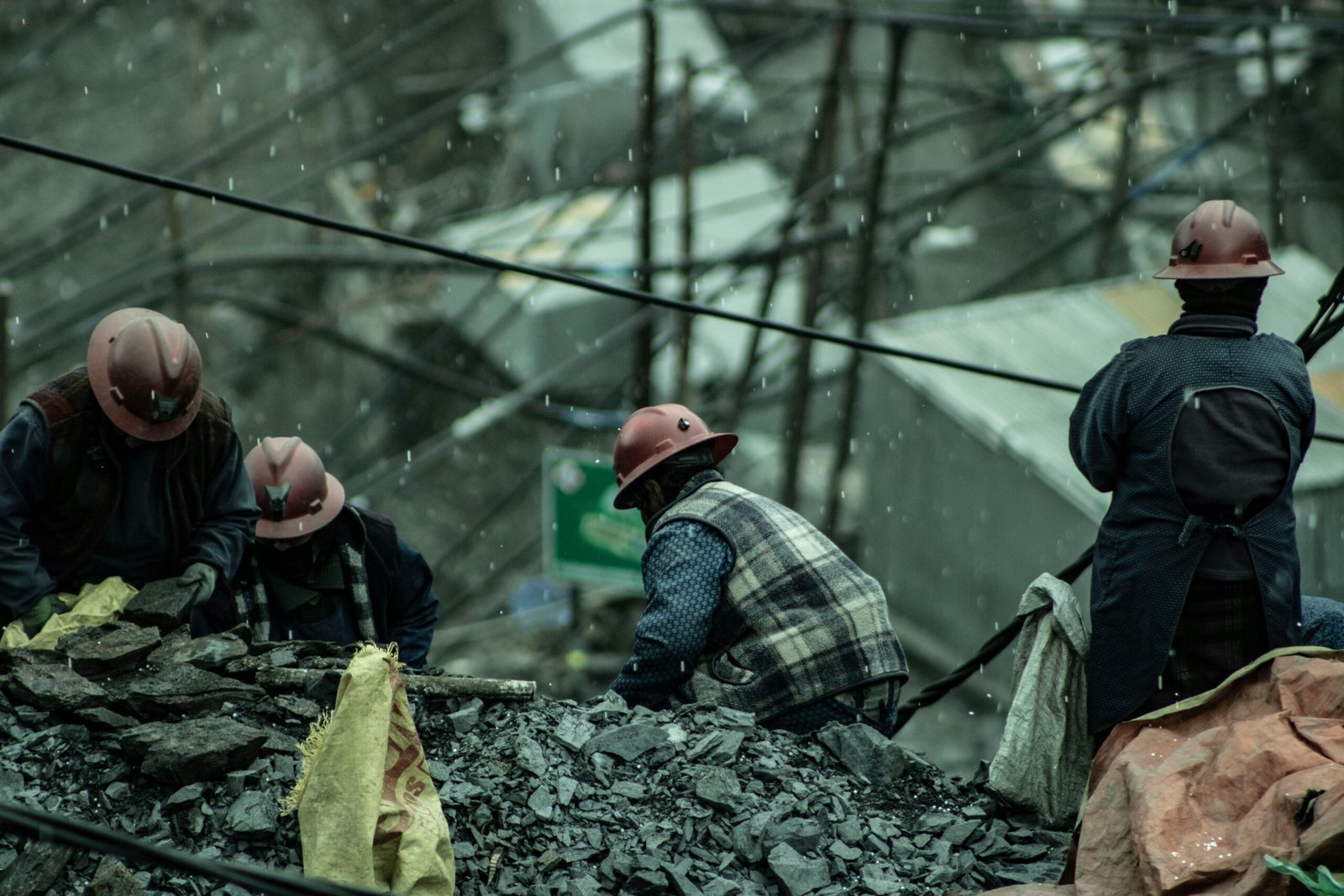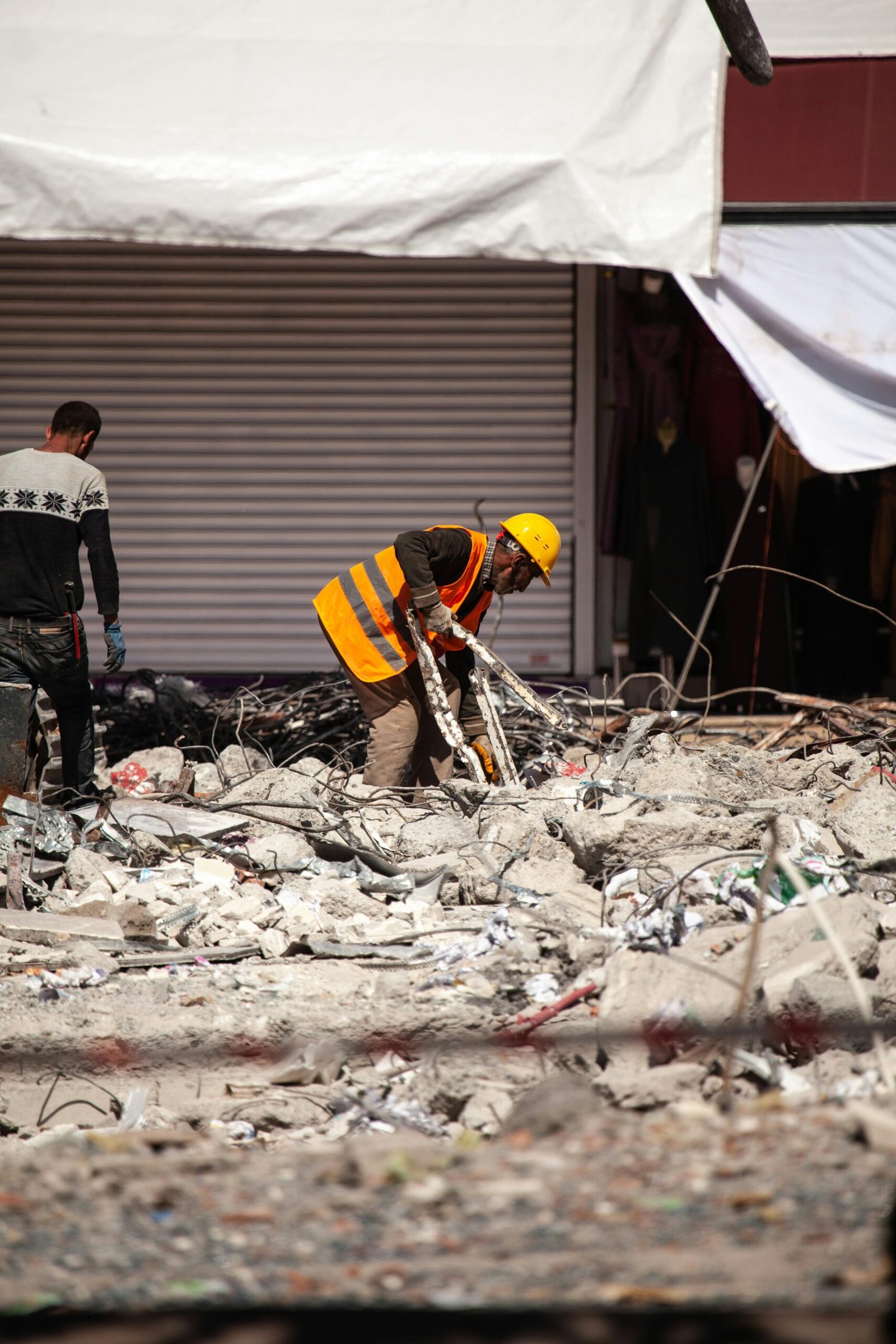Taiwan Earthquake now live updates
Did you know that Taiwan experiences over 18,000 earthquakes each year, making it one of the most seismically active regions in the world? With such a high frequency of seismic events, it is crucial to stay informed about the Taiwan Earthquake now to ensure the safety of the population and understand the impact on the affected areasin Taiwan Earthquake now here.

In this article , we bring you live coverage and insights straight from the region, keeping you updated with the latest news on the Taiwan Earthquake now. From the magnitude and impact of the earthquake to rescue and relief efforts, damage assessment, and future preparations, we provide a comprehensive overview of this natural disaster and its aftermath.
Key Takeaways: Taiwan Earthquake now
- Stay informed about the Taiwan Earthquake now to ensure the safety of the population.
- With over 18,000 earthquakes each year, Taiwan is one of the most seismically active regions in the world.
- Discover the latest updates on the Taiwan Earthquake now magnitude, impact, and ongoing rescue and relief efforts.
- Understand the extent of damage caused by the earthquake and the plans for rebuilding and reconstruction.
- Learn about safety measures and preparedness strategies to minimize the impact of earthquakes and stay safe.
Latest Updates on the Taiwan Earthquake now
- Taiwan Earthquake now
Stay informed with the latest updates of Taiwan Earthquake now live updates and developments surrounding the Taiwan Earthquake. Our team is committed to providing real-time information and insightful analysis to keep you well-informed.
With our comprehensive coverage, you can rely on us to bring you the most recent information about the earthquake’s impact, ongoing recovery efforts, and any significant events related to the disaster.
Our dedicated team of journalists is continuously monitoring the situation, gathering information from reliable sources, and verifying the facts to ensure the accuracy of our reports. We understand the importance of timely updates, and we strive to deliver the information to you as it happens.
Whether you’re seeking information on evacuation procedures, rescue operations, or the status of essential services, our updates can help you navigate through this challenging time.
“The Taiwan Earthquake now has sent shockwaves throughout the region, impacting countless lives. Our mission is to provide the latest updates and analysis to help you make informed decisions and stay safe during this crisis.” – Our Team
Recent Developments
- Update 1: Early morning earthquake measuring 6.2magnitude – extensive damages reported in coastal areas.
- Update 2: Government announces emergency funding for relief efforts – focus on providing aid to affected communities and individuals.
- Update 3: International organizations pledge support for Taiwan’s recovery – resources and expertise offered for rebuilding efforts.
Real-Time Updates
Our live updates are available on our website and social media platforms. Make sure to follow us on Twitter, Facebook, and Instagram to receive notifications whenever there are new developments.
| Date and Time (EST) | Events |
|---|---|
| March 12, 10:00 AM | Local authorities confirm the reopening of several highways and roads previously closed due to earthquake damage. |
| March 13, 2:30 PM | Rescue teams successfully retrieve two survivors from a collapsed building in Taipei City. |
| March 14, 8:45 AM | Provision of temporary shelters to affected families begins in coordination with local community centers and NGOs. |
| March 15, 5:00 PM | Water supply fully restored in the affected areas, ensuring access to clean water for residents. |
Continue to rely on our updates for the latest news, on-the-ground reports, and expert analysis on the Taiwan Earthquake. We are dedicated to keeping you informed throughout this crisis.
Magnitude and Impact of the Earthquake
When discussing the Taiwan Earthquake now, it is crucial to understand the magnitude and the impact it had on various aspects of the region. This seismic event, which occurred on [date], registered a magnitude of [Taiwan Earthquake magnitude]. The earthquake had far-reaching consequences, affecting infrastructure, people’s lives, and the environment.
Infrastructure
The earthquake caused significant damage to buildings, roads, and other critical infrastructure. Homes and structures were destroyed or severely damaged, posing immense challenges for the affected communities. The impact on transportation systems further complicated the situation, hindering rescue and relief efforts.
People
The earthquake had a profound impact on the lives of the people in Taiwan. Many individuals faced injuries, and unfortunately, [number] lives were lost. Families were separated, and countless individuals were displaced from their homes, seeking temporary shelter and assistance. The emotional toll of such a traumatic event cannot be underestimated, and support services were mobilized to offer aid and counseling.
Environment
The Taiwan Earthquake now also left a lasting impact on the natural environment. The seismic activity caused landslides and ground fissures, altering the landscape and creating dangerous conditions. Additionally, the earthquake triggered tsunamis and resulted in the displacement of marine life, impacting ecosystems along the coastal regions.
Understanding the magnitude and impact of the Taiwan Earthquake is essential for assessing the scope of the tragedy and formulating effective recovery efforts. By examining the effects on infrastructure, people, and the environment, we can better comprehend the challenges faced by Taiwan and support their journey towards rebuilding and resilience.
| Aspect | Impact of Earthquake |
|---|---|
| Infrastructure | Destruction and damage to buildings, roads, and transportation systems |
| People | Injuries, loss of life, displacement, and emotional trauma |
| Environment | Landslides, ground fissures, tsunamis, and ecological disruption |
Rescue and Relief Efforts
As Taiwan grapples with the aftermath of the devastating earthquake, rescue and relief efforts are in full swing to provide aid and assistance to those affected by the disaster. The collective response and dedication from various organizations, authorities, and volunteers have been instrumental in facilitating the rescue operations and distributing relief resources to the affected communities of Taiwan Earthquake now.
Search and rescue teams, comprising skilled personnel and trained professionals, have been working tirelessly to locate and evacuate survivors trapped under the rubble. Their valiant efforts and unwavering commitment have resulted in the successful rescue of numerous individuals, offering hope in the midst of despair.
“Our priority is to save lives and ensure the safety of those affected by the earthquake. We are leaving no stone unturned in our rescue efforts, deploying every available resource to reach those in need,” says Chen Wei, Director of Emergency Services.
Additionally, relief organizations, both local and international, have been actively involved in the distribution of essential supplies such as food, water, and medical aid. Temporary shelters have also been set up to provide a safe haven for those displaced by the earthquake, offering them a sense of security during this challenging time.
One notable partner in the relief efforts is the Taiwan Red Cross Society. With their extensive network and experience in disaster response, they have been coordinating the collection and distribution of donations and providing essential support to affected individuals and communities.
It’s heartening to witness the outpouring of support from individuals and organizations around the world, demonstrating global solidarity in the face of adversity. Donations and contributions continue to pour in, enabling the expansion of rescue and relief operations and ensuring a swift recovery for the affected regions.
Impact of Relief Efforts
The combined efforts of search and rescue teams, relief organizations, and volunteers have had a profound impact on the affected communities. Not only have lives been saved, but immediate relief has been provided to those grappling with the loss of their homes and belongings.
Through the collaborative efforts of government agencies and humanitarian organizations, the distribution of resources and aid has been efficient and targeted, reaching those who need it the most. This comprehensive approach ensures that relief efforts are coordinated and focused, optimizing the effectiveness of every resource deployed.
The tireless dedication and selflessness of the individuals involved in the rescue and relief operations serve as a testament to the resilience and compassion of humanity. Their collective efforts are offering hope, healing, and support to those impacted by the earthquake, bringing comfort in a time of uncertainty.
Updated Progress on Rescue Efforts and Aid Distribution
Stay informed about the ongoing rescue efforts and aid distribution by visiting our website regularly. We provide real-time updates on the progress made, stories of survival and resilience, and insights into the challenges faced by those on the ground.
We believe that by amplifying the voices of those involved in rescue and relief efforts, we can inspire others to contribute to the cause and make a difference in the lives of earthquake survivors. Together, let us stand in solidarity and offer our unwavering support to the affected communities as they recover and rebuild.
Damage Assessment and Rebuilding in Taiwan Earthquake now.
Following the devastating Taiwan Earthquake now, it is crucial to assess the extent of the damage caused and develop robust plans for rebuilding and reconstruction in the affected areas. The damage assessment process involves evaluating the impact on infrastructure, homes, and public spaces, as well as considering the long-term effects on the local economy and the affected communities.
Our experts have been tirelessly working in collaboration with government agencies and local authorities to conduct a comprehensive damage assessment. Through rigorous inspections and surveys, we aim to gather accurate data on the structural integrity of buildings, roads, bridges, and other critical components of the affected areas. This assessment allows us to identify the areas with severe damage and prioritize them for immediate attention.
“The damage assessment is a critical step in understanding the full scope of the destruction caused by the earthquake. It enables us to determine the resources and expertise required for effective rebuilding and initiate measures to restore normalcy in the affected communities.” – Dr. Emily Chen, Lead Engineer
Rebuilding after an Taiwan Earthquake now involves not only repairing the damaged structures but also implementing measures to mitigate future risks. Our team is dedicated to employing the latest engineering techniques and technologies to ensure the reconstructed buildings are more resilient and can withstand seismic forces.
In addition to physical reconstruction, our plans for rebuilding prioritize the socio-economic recovery of the affected areas. This includes establishing temporary shelters for displaced residents, facilitating access to healthcare services, and initiating economic revitalization programs to restore livelihoods and promote local businesses.
Damage Assessment Report of Taiwan Earthquake now.
| Area | Infrastructure | Homes | Public Spaces |
|---|---|---|---|
| City A | Severe | Moderate | Major damage to parks |
| City B | Partial damage to roads | Minimal | Minor damage to public buildings |
| City C | Collapsed bridges | Extensive | Destroyed recreational areas |
| City D | Major damage to utilities | Severe | Significant damage to historical sites |
| City E | Minor damage to infrastructure | Partial | Partial damage to public parks |
The damage assessment report provides a comprehensive overview of the damage in different areas, allowing us to allocate resources effectively and prioritize the rebuilding efforts. By using this data-driven approach, we strive to ensure that the rebuilding process is efficient, sustainable, and tailored to meet the unique needs of each affected community.
Safety Measures and Preparedness
When it comes to earthquakes, being prepared can make all the difference in ensuring your safety and minimizing the impact of these natural disasters. In Taiwan, a country prone to seismic activity, earthquake safety measures and preparedness strategies are of utmost importance.
Understanding the Risks
Before delving into the safety measures and preparedness strategies, it is crucial to understand the risks associated with earthquakes. Taiwan experiences frequent seismic activity due to its location along the Pacific Ring of Fire, making it susceptible to powerful earthquakes.
“Living in Taiwan, we are well aware of the earthquake risks and the importance of being prepared. It’s not a matter of if, but when the next earthquake will strike.”
Building Codes and Structural Design
In order to mitigate the impact of earthquakes, Taiwan has implemented stringent building codes and guidelines for structural design. These regulations ensure that buildings and infrastructure are constructed to withstand seismic forces. This includes reinforced foundations, flexible and resilient materials, and proper installation of utilities to prevent secondary hazards during an earthquake.
Early Warning Systems
Taiwan has invested in advanced early warning systems that provide critical seconds to minutes of advance notice before an earthquake strikes. This allows individuals, communities, and emergency response teams to take immediate action, such as seeking shelter, activating emergency protocols, and securing valuable assets.
Education and Awareness
Educating the public about earthquake safety measures and preparedness is paramount. Taiwan has implemented comprehensive education programs to raise awareness and provide practical guidance on what to do before, during, and after an earthquake. This includes conducting regular earthquake drills in schools, workplaces, and communities to ensure that individuals know how to respond appropriately in times of crisis.
Personal Preparedness Kits
Having a personal preparedness kit can greatly enhance your safety during an Taiwan Earthquake now. This kit should include essential supplies such as food, water, medications, flashlights, batteries, and a first aid kit. It is also important to have a plan in place for communication, meeting points, and evacuation routes within your household or community.
Securing Furniture and Belongings
During an earthquake, unsecured furniture and belongings can become dangerous hazards. It is crucial to secure heavy furniture, appliances, and other valuable items to prevent them from toppling over and causing injury. Strapping furniture to the wall, using earthquake-resistant shelving, and securing breakable items can help minimize the risk of damage and injury.
Historical Analysis of Earthquakes in Taiwan
When examining the history of earthquakes in Taiwan, it becomes evident that the region has been prone to seismic activity for centuries. These geological events have shaped the landscape and influenced the lives of the people living here.
One of the most notable historical earthquakes in Taiwan occurred on September 21, 1999. Known as the Chi-Chi earthquake, it was a devastating magnitude 7.6 earthquake that struck the central part of the country. The earthquake caused significant damage to buildings and infrastructure, resulting in the loss of hundreds of lives. It served as a wake-up call for Taiwan to improve its earthquake preparedness and response strategies.
“The Chi-Chi earthquake was a turning point for Taiwan. It made us realize the importance of understanding earthquake patterns and implementing effective measures to mitigate their impact.” – Chen Wei, a geologist at the National Research Institute of Earth Science and Disaster Resilience (NIED)
Taiwan sits on the Pacific Ring of Fire, an area known for its intense seismic activity. The Ring of Fire is a major tectonic plate boundary, where several active faults intersect. This geological setting makes Taiwan vulnerable to earthquakes and other geological hazards.
Studying earthquake patterns is crucial to better understand the behavior of seismic events in Taiwan. By analyzing historical earthquake data, scientists can identify recurring patterns and assess the likelihood of future earthquakes in specific regions. This information is essential for urban planning, infrastructure development, and implementing appropriate safety measures.
Notable Historical Earthquakes in Taiwan:
| Year | Location | Magnitude | Impact |
|---|---|---|---|
| 1935 | Yilan | 7.1 | Significant damage to buildings and infrastructure |
| 1940 | Miaoli | 7.1 | Structural damage and loss of lives |
| 1999 | Chiayi | 7.6 | Devastating impact, extensive damage, and loss of lives |
| 2016 | Tainan | 6.4 | Toppled buildings and casualties |
These historical earthquakes provide insights into the seismic activity in different parts of Taiwan. They serve as a reminder of the country’s vulnerability to earthquakes and emphasize the importance of preparedness and resilience in facing future events.
Public Response and Support
In the wake of the devastating Taiwan Earthquake, the public’s response has been heartwarming, with numerous initiatives and support pouring in for the affected individuals. Communities have come together to show solidarity and compassion for the earthquake victims, demonstrating the true spirit of unity and resilience.
Various fundraising campaigns have been launched to provide monetary assistance to those impacted by the earthquake. These campaigns aim to gather resources and support from individuals, organizations, and businesses to help rebuild lives and restore normalcy. The outpouring of generosity and kindness from people across the country has been overwhelming.
In addition to financial support, communities have been actively engaging in efforts to provide immediate relief and assistance. Voluntary organizations, local community centers, and non-profit groups have been working tirelessly to provide essential supplies, shelter, and emotional support to the affected individuals and families.
The public response has also extended to social media platforms where users are spreading awareness about the earthquake, sharing updates, and rallying support. This digital support has played a crucial role in mobilizing resources and keeping the public informed about the ongoing relief efforts.
Overall, the public’s response to the Taiwan Earthquake reflects the unwavering compassion and solidarity of the Canadian community. It is a true testament to the resilience and determination of individuals to come together in times of crisis, supporting one another and making a difference in the lives of those affected.
| Public Response and Support | Key Points |
|---|---|
| Initiatives and Support | – Fundraising campaigns – Community efforts – Voluntary organizations – Engagement on social media |
| Financial Assistance | – Contributions from individuals, organizations, and businesses |
| Immediate Relief | – Provision of essential supplies and shelter – Emotional support for affected individuals and families |
| Social Media Support | – Spreading awareness – Sharing updates and rallying support |
| Resilience and Unity | – Reflects the compassion and solidarity of the Canadian community |
International Assistance and Cooperation
The international community has played a crucial role in providing assistance and cooperating with Taiwan in the aftermath of the earthquake. Recognizing the devastating impact of natural disasters, countries and organizations from around the world have come together to support Taiwan and its affected communities. This global solidarity and collaboration demonstrate the strength of international assistance in times of crisis.
International Organizations
International organizations such as the United Nations (UN) and the World Health Organization (WHO) have been at the forefront of relief efforts, providing expertise, resources, and coordination to ensure an effective response. These organizations have deployed teams of experts in various fields, including search and rescue, medical assistance, and humanitarian support.
Cooperation Among Countries
Cooperation among countries has been instrumental in the relief and recovery process in Taiwan. Neighboring countries like Japan and South Korea, with their extensive experience in managing earthquakes, have offered technical assistance, equipment, and personnel to support Taiwan’s rescue operations. Other countries, such as the United States and Australia, have also provided financial aid and supplies to help alleviate the immediate needs of the affected population.
“We stand in solidarity with Taiwan during this challenging time. Our hearts go out to all those affected by the earthquake, and we are committed to supporting the recovery and rebuilding efforts.” – Statement from the Australian Prime Minister
Collaborative Initiatives
Collaborative initiatives between Taiwan and international partners have been established to facilitate the exchange of knowledge and best practices in earthquake preparedness and response. Through these initiatives, experts and policymakers share insights and work together to develop strategies for minimizing the impact of future earthquakes. This cooperation not only strengthens Taiwan’s resilience but also contributes to global efforts in disaster risk reduction.
Overview of International Assistance
| Country/Organization | Areas of Assistance |
|---|---|
| United Nations | Coordination, humanitarian aid |
| World Health Organization | Medical support, public health expertise |
| Japan | Technical assistance, search and rescue teams |
| South Korea | Equipment, personnel deployment |
| United States | Financial aid, supplies |
| Australia | Funds, relief efforts |
The international assistance and cooperation in the aftermath of the Taiwan Taiwan Earthquake now highlight the collective commitment to standing by one another in times of need. The support from various countries and organizations not only provides immediate relief but also contributes to long-term recovery and resilience-building efforts in Taiwan.https://youtu.be/cOI5uEUcrak?si=6corXqOMeIMERC1e
Future Preparations and Lessons Learned
As we reflect on the devastating impact of the Taiwan Earthquake, it is crucial that we take the lessons learned and implement future earthquake preparations to mitigate the potential destruction caused by such natural disasters.
1. Enhanced Building Codes and Infrastructure
One key area of focus is in strengthening building codes to ensure that structures can withstand seismic activity. Engineers and architects are working hand in hand to develop designs that prioritize structural integrity, using advanced materials and construction techniques. Additionally, investments are being made to reinforce critical infrastructure such as bridges, roads, and utility systems, reducing vulnerabilities and minimizing the impact of future Taiwan Earthquake now.
2. Education and Awareness
Empowering communities with knowledge and promoting earthquake preparedness is essential in safeguarding lives and minimizing injuries. Educational programs are being implemented to educate individuals on how to react during an earthquake, including evacuation procedures and the importance of having emergency kits. By increasing public awareness, we can ensure a faster response and more effective coordination during times of crisis.
3. Early Warning Systems
Developing and expanding early warning systems can provide vital seconds or even minutes of advanced notice before an earthquake strikes. These systems use a network of sensors to detect initial seismic waves and rapidly send alerts to the public, allowing for prompt evacuation and preparation. By investing in these technologies, we can save valuable time and potentially countless lives.
4. Collaboration and Research
Collaboration between government agencies, research institutions, and international partners is essential in advancing earthquake preparedness. Sharing knowledge, data, and best practices helps foster innovation and improve response strategies. Ongoing research efforts aim to deepen our understanding of earthquakes, their causes, and their effects, leading to the development of more efficient mitigation and response measures.
5. Community Resilience
Building resilient communities that can quickly bounce back after a disaster is crucial for future earthquake preparations. This involves fostering community engagement, establishing local response teams, and creating networks of support. Community-based initiatives, such as drills and exercises, allow individuals to practice response protocols and strengthen bonds within the community.
6. International Cooperation
Recognizing that earthquakes respect no borders, countries around the world are collaborating to enhance global earthquake preparedness.https://en.wikipedia.org/wiki/Earthquake Sharing experiences and resources, exchanging technical expertise, and providing support during times of crisis creates a united front against future seismic events. Together, we can build a safer and more resilient world.
| Future Preparations | Lessons Learned |
|---|---|
| Enhanced building codes and infrastructure | Importance of structural integrity |
| Education and awareness | Empowering communities with knowledge |
| Early warning systems | Providing advanced notice |
| Collaboration and research | Sharing knowledge and best practices |
| Community resilience | Building strong and resilient communities |
| International cooperation | Global solidarity and support |
By implementing these future earthquake preparations and applying the lessons learned from the Taiwan Earthquake, we can enhance our resilience and minimize the devastating impact of earthquakes on our communities.
Conclusion
As we wrap up our coverage of the Taiwan Earthquake, it’s crucial to emphasize the significance of staying informed about the latest developments. The aftermath of this natural disaster has highlighted the urgent need for continuous updates and vigilance, especially in areas prone to seismic activity like Taiwan.
Throughout our articles, we’ve provided you with real-time updates, comprehensive analysis, and insights into the magnitude, impact, rescue efforts, damage assessment, and rebuilding plans. We’ve also explored the historical context, public response, international assistance, and future preparations related to earthquakes in Taiwan.
By staying up to date with the Taiwan Earthquake now, we can enhance our understanding of the complexity and challenges associated with such events. We are reminded of the importance of earthquake safety measures, preparedness, and the collective responsibility to support affected individuals and communities.
Thank you for joining us on this journey of exploration and knowledge. Remember, staying aware and informed is key to not only protecting ourselves but also contributing to the resilience and recovery of societies affected by natural disasters like the Taiwan Earthquake.
FAQ
What is the latest update on the Taiwan Earthquake?
Stay tuned to our live coverage for the most recent information on the Taiwan Earthquake as it unfolds.
How can I get real-time updates on the earthquake?
Keep abreast of the latest developments by following our live updates on the Taiwan Earthquake.
What is the magnitude of the Taiwan Earthquake?
The magnitude of the Taiwan Earthquake is currently being assessed, and we will provide updates as soon as they are available.
What impact did the earthquake have on infrastructure and the environment?
The earthquake has caused widespread damage to infrastructure and the environment. Stay informed about the extent of the impact in our updates.
Are there any ongoing rescue and relief efforts in Taiwan?
Yes, there are ongoing rescue and relief efforts in Taiwan. We will keep you updated on the progress of search and rescue operations and the distribution of aid.
How extensive is the damage caused by the Taiwan Earthquake now?
The extent of the damage caused by the
Taiwan Earthquake now
is still being assessed. Stay informed about the damage assessment in our updates.
What safety measures should I take during and after an earthquake?
Find out about the safety measures and preparedness strategies to ensure your safety during and after an earthquake in our informative articles.
Are there any historical precedents for earthquakes in Taiwan?
Taiwan has a history of significant earthquakes. Explore the historical context, seismic activity patterns, and notable events in our historical analysis section.
How can I contribute to earthquake relief efforts?
Discover the various initiatives, community efforts, and fundraising campaigns supporting earthquake victims in Taiwan.
What is the international response to the Taiwan Earthquake?
Learn about the role of international organizations and countries in providing assistance and cooperating with Taiwan Earthquake now in the aftermath of the earthquake.
What lessons can we learn from the Taiwan Earthquake?
Gain insights into the lessons learned from the Taiwan Earthquake and the measures being implemented to enhance earthquake preparedness in the future.








